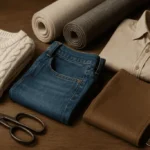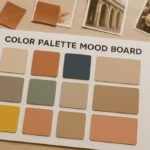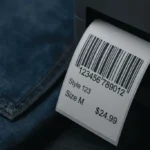Product sampling is an effective and affordable way of introducing people to your fashion line. It’s a great option for businesses that are looking to reach new audiences and generate interest in their products. Additionally, product sampling can help reduce costs associated with design, sampling, and production.
If you’re considering starting a product sampling program for your fashion line, be sure to read this post. It covers the basics of product sampling, its benefits, how to get started, fashion sample tracking, and tips for increasing your business with this powerful marketing tool.
Introduction to Fashion Product Sampling
The fashion industry relies heavily on product sampling to showcase designs, test production processes, and meet market demands. Fashion brands use samples to create precise patterns, track samples, and manage sample requests. Effective sample management is crucial for fashion designers and manufacturers to streamline their workflows, reduce material waste, and optimize production processes. By leveraging software tools and robust design tools, fashion brands can create digital prototypes, visualize garments, and make informed decisions about their designs. In this section, we will explore the importance of fashion product sampling and its role in the fashion design process.
The Benefits of a Fashion Product Sampling At a Glance
Product sampling is all about giving potential customers the chance to experience your product firsthand. Many brands leverage this strategy to test their products as well as to get more exposure.
Check out a snapshot of an Instagram post where the apparel and accessories brand, Loungefly, partnered with an influencer to giveaway their Red Panda Cosplay mini backpack.

The post received over 14,000 likes and hundreds of comments, which means the fashion brand was able to generate a massive amount of awareness and engagement in a relatively short amount of time.
Apart from increasing brand awareness and engagement, fashion product sampling offers other benefits such as:
- Gauge the potential of your new product.
- Build brand awareness and affinity.
- Generate new leads.
- Help customers make purchasing decisions.
- Improve customer confidence in your brand and products.
- Gain feedback about your product even before launching the actual product.
- Increase sales and revenue.
- Strengthen customer relationships.
- Enhance customer loyalty.
- Showcase collections through product sampling to enhance customer satisfaction and streamline collaboration among designers and merchants.
Your Guide to Fashion Product Sampling
Getting started with product sampling is easy. All you need to do is decide which products to sample, decide how to distribute them, and start tracking the results. Creating samples efficiently can enhance the overall sampling process, making it more streamlined and effective.
Here are the steps you should follow to do product sampling for your fashion business:
1. Develop a Target Audience
Before launching any product sampling program, it’s important to determine who your target audience is and what type of product they’re likely to be interested in. This will help you select the right products and target the right people.
2. Decide on Samples
Once you’ve identified your target audience, it’s time to decide which fashion items to sample. Consider the types of fashion items your target audience will find appealing and limit the samples to a few select items.
Here, you also need to know that there are three types of garment samples in general, which include:
- Mock-ups: These are fashion items that are used for the purpose of display and to present the fashion line to buyers.
- Salesman samples: These fashion items are produced to give potential buyers the chance to experience your fashion item.
- Production Samples: These fashion items are used to check quality control and approve the fashion item before bulk production.
In all cases, fashion items that you sample should be fashionably stylish and of high quality.
3. Select a Distribution Model
When it comes to fashion product sampling, there are several distribution models you can choose from. You can distribute samples through fashion events, hand out samples in stores, or even use fashion tracking software to send samples out to selected loyal customers.
You can also sponsor fashion events, not by investing big but only by giving away samples of your new products in the line. It can help you attract a lot of new customers to your brand. Another effective method is to offer a home try-on program just like Warby Parker does. The company lets its customers try 5 glass frames at their homes for free.

When doing product sampling, you should also consider the costs of distributing the fashion samples using different methods.
4. Track and Analyze Results
Once you’ve sent out your fashion samples, it’s important to track and analyze the results. This can be done through fashion sample tracking software such as . This platform allows fashion companies to track and trace their fashion samples, so they can measure the results of their product sampling program. Using tracking software can also improve the efficiency of the sampling process by streamlining data collection and analysis.
You’ll be able to track who receives your fashion product samples and their feedback, as well as other important metrics such as the sales and conversion potential of your new product.
Analyzing how customers are responding to your fashion line will give you a better idea about whether or not your new product will be successful in the fashion industry.
Understanding Sample Management
Sample management is a critical component of the fashion industry, involving the creation, tracking, and distribution of physical samples. Fashion brands use sample management software to track samples, manage sample requests, and optimize their production processes. By using software tools, designers and manufacturers can create precise patterns, reduce material waste, and streamline their workflows. Sample management also involves collaboration between design teams, manufacturers, and customers to ensure that samples meet market demands and customer expectations. In this section, we will delve into the world of sample management and explore its significance in the fashion industry.
The Role of Pattern Making
Pattern making is a fundamental aspect of fashion design, involving the creation of precise patterns to produce garments. Fashion designers use pattern making software to create digital patterns, grade patterns, and optimize production processes. Gerber technology and Adobe Illustrator are popular software tools used in pattern making, allowing users to create precise patterns and visualize garments. By using pattern making software, designers can reduce material waste, streamline their workflows, and create high-quality garments that meet market demands. In this section, we will explore the role of pattern making in fashion design and its significance in the production process.
Design and Prototyping
Design and prototyping are critical stages in the fashion design process, involving the creation of digital prototypes and physical samples. Fashion designers use design software to create digital prototypes, visualize garments, and test production processes. Virtual prototyping allows designers to make informed decisions about their designs, reduce material waste, and optimize production processes. By using design software, designers can create precise patterns, grade patterns, and produce high-quality garments that meet market demands. In this section, we will explore the importance of design and prototyping in fashion design and its significance in the production process.
Using Design Software
Design software is a crucial tool in the fashion industry, allowing designers to create digital prototypes, visualize garments, and optimize production processes. Fashion design software provides a range of features, including pattern making, grading, and marker making. By using design software, designers can create precise patterns, reduce material waste, and streamline their workflows. Design software also enables designers to collaborate with manufacturers, customers, and other stakeholders to ensure that designs meet market demands and customer expectations. In this section, we will explore the different types of design software available, their features, and their significance in the fashion industry. We will also discuss how design software can help fashion brands market faster, reduce lead times, and improve their overall productivity.
Tips for Growing Your Business with Product Sampling
Product sampling can be an effective way to generate interest in your fashion line and attract new audiences, but it’s important to make sure you’re doing it right. Incorporating creativity in your sampling strategies can attract new audiences and generate interest.
Here are some tips to help you maximize the success of your fashion product sampling program:
1. Focus on Quality
When sending fashion samples, focus on quality over quantity. High-quality fashion items will be more likely to get noticed and remembered by potential customers.
2. Utilize Social Media
Social media is an effective tool for fashion product sampling. You can use it to reach out to potential customers and make sure they’re aware of your fashion line.
3. Giveaways and Discounts
Another way to generate interest in your fashion line is to offer giveaways and discounts on fashion items. This will encourage people to try out your fashion products and help spread the word about them.
4. Fashion Sample Tracking
It’s important to track the results of your fashion product sampling program in order to measure its success.
Use fashion tracking software to analyze the results of your product sampling program. This will help you understand how effective your fashion samples were at attracting customers and increasing sales.
By following these tips, you’ll be able to get the most out of fashion product sampling and use it to grow your apparel business.
Are You Ready to Grow Your Fashion Line with Product Sampling?
The fashion industry is a competitive one, but fashion product sampling can give your fashion line an edge.
By carefully selecting fashion samples, distributing them with the right model, and tracking the results, you can effectively use fashion product sampling to grow your fashion business. Utilizing fashion sample tracking software, such as Wave PLM, can also help you trace and analyze the results of your fashion product sampling program and maximize its success.
With the right strategy and fashion tracking software, you can ensure that your fashion line is successful and profitable. Good luck!




